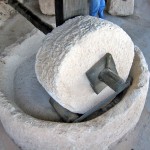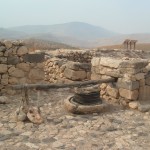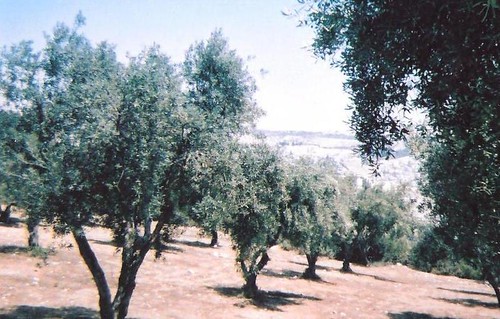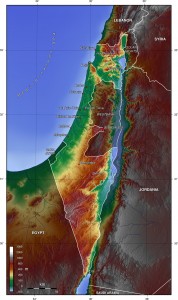“A Land of Wheat, of Barley, Grapes, Figs and Pomegranates, a land of Olive Oil and honey” (Deuteronomy / Devarim – 8:8)
This weeks portion of the Torah discusses some of the blessed qualities of the land of Israel.
There is a slight textual difficulty in that it only mentions one product of a fruit; Olives. It does not say a land of ‘Wheat Bread’ or ‘Grape wine’ or ‘Pomegranate slushies’.
What Are Olive Trees Good For ?
So one answer given by Rabbi Shlomo Yitzchaki (10th Century Torah commentator) is to tell us that the Olive trees were used for oil. But is n’t this a bit obvious; we can get 2 things from an olive tree:
1 Olives
2 Olive Oil.
Surely we could say that about all these fruits.
Ah! but all these other fruits have multiple uses: you can have beer or bread, pomegranites, pomegranite slushies or grenadine etc. With olives thats pretty much all you get; olives and oil. Ever heard of Olive wine ? Normally (unless we’re constipated) we do n’t drink Olive Oil. All these other products are edible as well.
Its all Part of the Process
Three of the fruits have a process associated with them. Both wheat and grapes can be fermented to make bread, beer or wine, by extension all of the fruits except for Olives can be fermented but that’s fairly uncommon, people mosly ferment wheat and grapes.
Olives have a special process associated with them. Firstly they are squashed normally releasing a tiny little bit of oil. This first squeezing releases the best oil or ‘Virgin Oil’. Then the pips and skins are gather again, put in baskets and squeezed once more. Since antiquity Olives have undergone this intricate process of squeezing.

This is for collecting the virgin Oil from the first crush, the upper stone is called a memel, the lower stone is called a 'yam.

This is a re -constructed ' beam and weight' press from Tel Hatzor, the baskets of olive bits are squashed by the Kora 'beam'' to collect the lower stage of Olive Oil.
Olives: Not just for Salad Dressing – a symbol of Light
Olive oil was the main source of lighting in the Ancient Near East, the purpose of the process mentioned above was light. The product of Olives – oil gets a special mention because of its high value. My teacher, Rabbi Yitzchak Hirshfeld said that Olives are a symbol of the Jewish people that they are crushed through the travails of history and continue to produce the Light of Truth, the light of the Torah.
(These words of Torah are dedicated to the speedy recovery of Zlata bat Sima, please include her in your prayers and in the memory of the seven precious souls who were killed today in Southern Israel)


